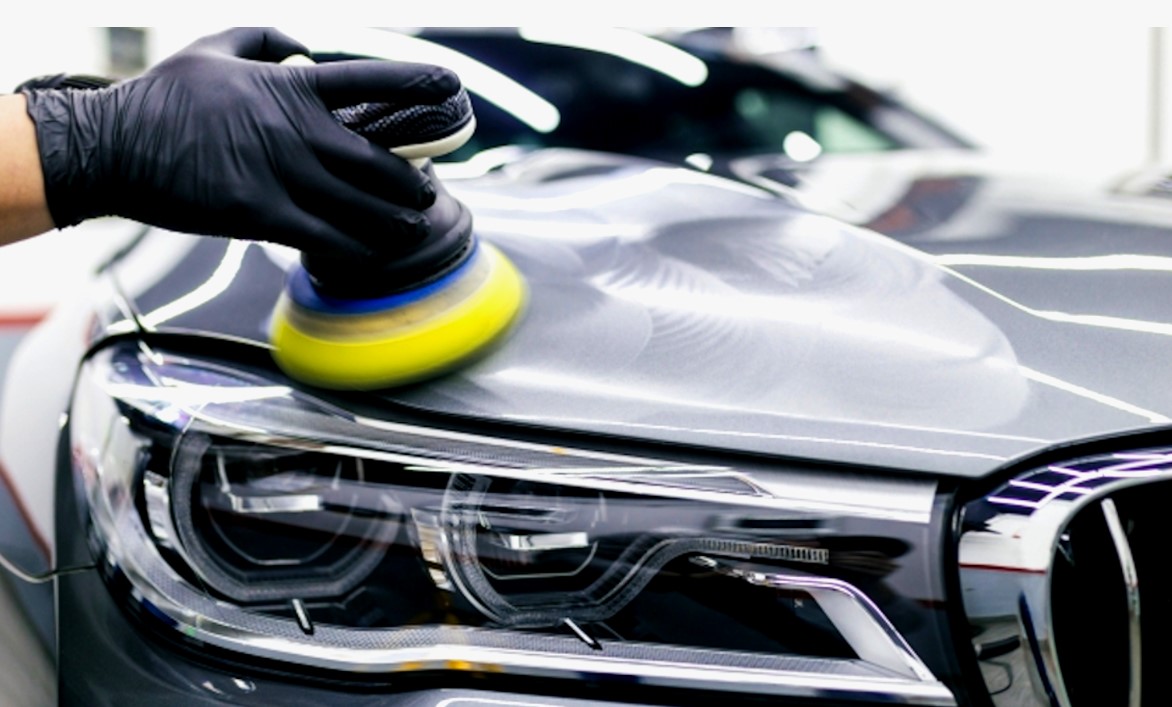Automotive photography is an art form that requires meticulous attention to detail, an understanding of lighting, and a keen eye for capturing the essence of a vehicle. One of the most critical aspects of preparing a car for photography is ensuring its exterior is in pristine condition. Car polishing plays a pivotal role in this preparation, significantly enhancing the visual appeal of the vehicle. This article delves into how car polishing enhances automotive photography, covering the technical aspects, benefits, and best practices.
The Role of Car Polishing in Automotive Photography
Car polishing is a process that involves using abrasive materials to remove a thin layer of the car’s paint, eliminating imperfections such as scratches, swirls, and oxidation. This results in a smooth, reflective surface that can dramatically improve the quality of photographs. In automotive photography, the appearance of the car’s exterior is paramount, and polishing ensures that the vehicle looks its best under various lighting conditions.
Enhancing Reflectivity and Shine
A well-polished car surface enhances reflectivity and shine, which is crucial for automotive photography. The polished surface reflects light evenly, creating a glossy, mirror-like finish that highlights the vehicle’s lines and curves. This effect is especially important when shooting in natural light, as the sun’s rays can accentuate the polished surface, adding depth and dimension to the photographs.
Importance of Reflectivity:
- Highlighting Details: Reflectivity helps in emphasizing the intricate details of the car’s design, making them stand out in the photos.
- Depth and Dimension: A glossy finish adds a sense of depth and dimension, making the vehicle appear more dynamic and visually appealing.
- Professional Finish: High reflectivity gives the car a professional, showroom-quality appearance, essential for commercial photography.

Minimizing Imperfections
Car polishing effectively minimizes surface imperfections that can detract from the quality of automotive photographs. Scratches, swirl marks, and oxidation can create unwanted reflections and distortions in the images. Polishing smooths out these imperfections, ensuring a clear and flawless finish.
Benefits of Minimizing Imperfections:
- Clear Reflections: A smooth surface ensures clear and undistorted reflections, enhancing the overall clarity of the photographs.
- Uniform Appearance: Eliminating imperfections provides a uniform appearance, which is crucial for capturing high-quality images.
- Enhanced Contrast: A polished surface enhances contrast, making the vehicle stand out against its background.
Preparing for Close-Up Shots
Close-up shots are a staple in automotive photography, often focusing on specific features such as the grille, headlights, or emblem. These shots require the surface to be free from blemishes to ensure every detail is captured accurately. Polishing prepares the car for such detailed photography by providing a clean and reflective surface that highlights the intricate features of the vehicle.
Preparation for Close-Ups:
- Detail Emphasis: Polishing brings out fine details, making close-up shots more impactful.
- Flawless Finish: A polished surface ensures a flawless finish, essential for high-resolution images.
- Highlighting Features: Close-ups benefit from the enhanced shine and reflectivity provided by polishing, making features stand out prominently.
Enhancing Color Depth and Vibrancy
Car polishing enhances the depth and vibrancy of the vehicle’s color, making it more appealing in photographs. The polishing process removes oxidized paint and contaminants, revealing the true color of the car. This results in richer, more vibrant hues that are captured beautifully in photographs.
Color Enhancement:
- True Color: Polishing removes dullness, revealing the car’s true color.
- Richness: Enhanced color depth adds richness to the photographs, making them more visually striking.
- Consistency: A polished surface ensures consistent color throughout, important for professional photography.

Impact on Lighting and Shadows
Lighting is a critical element in automotive photography. A polished car interacts with light in ways that can enhance the final image. The reflective surface created by polishing helps in managing highlights and shadows, contributing to a more balanced and visually appealing photograph.
Lighting Effects:
- Highlight Control: A polished surface allows for better control of highlights, preventing overexposure.
- Shadow Definition: Enhanced reflectivity provides better definition to shadows, adding depth to the images.
- Light Distribution: Even light distribution across the polished surface ensures a balanced photograph.
Professional Presentation
For commercial automotive photography, presenting the vehicle in its best condition is essential. A polished car not only looks better but also conveys a sense of care and professionalism. This is particularly important for advertisements, brochures, and online listings, where the visual appeal of the car can influence potential buyers.
Professionalism:
- Showroom Quality: Polishing gives the car a showroom-quality finish, essential for professional presentations.
- Visual Appeal: Enhanced shine and reflectivity increase the vehicle’s visual appeal, making it more attractive to potential buyers.
- First Impressions: A polished car creates a positive first impression, critical in commercial photography.
Best Practices for Car Polishing
To achieve the best results in automotive photography, it is important to follow best practices when polishing the car. This includes choosing the right products, using the correct techniques, and ensuring a clean working environment.
Selecting Products:
- Quality Compounds: Use high-quality polishing compounds suited to the car’s paint type.
- Appropriate Pads: Select polishing pads that match the level of correction needed.
Polishing Techniques:
- Hand Polishing: Ideal for minor imperfections and detailed areas.
- Machine Polishing: Recommended for larger surfaces and deeper imperfections.
- Wet Sanding: Used for severe defects and achieving a perfectly smooth finish.
Environmental Factors:
- Clean Surface: Ensure the car is thoroughly washed and dried before polishing.
- Controlled Environment: Work in a clean, dust-free area to prevent contamination.
Conclusion
Car polishing is an indispensable part of preparing a vehicle for automotive photography. By enhancing reflectivity, minimizing imperfections, and improving color depth, polishing ensures that the car looks its best under the camera lens. Whether for commercial purposes or personal projects, a polished car can significantly elevate the quality of automotive photographs.
For those seeking professional assistance, a reputable car polishing service can provide expert care, ensuring that the vehicle is in prime condition for photography. By adhering to best practices and understanding the technical aspects of car polishing, photographers can achieve stunning results that capture the true essence of the vehicle.
For further information on car polishing techniques and best practices, visit resources like the Environmental Protection Agency (EPA) for eco-friendly practices and the Society of Automotive Engineers (SAE) for industry standards and advancements.

Here you’ll find thoughts on lifestyle, digital work, side-projects, and staying grounded in a fast-paced city.

